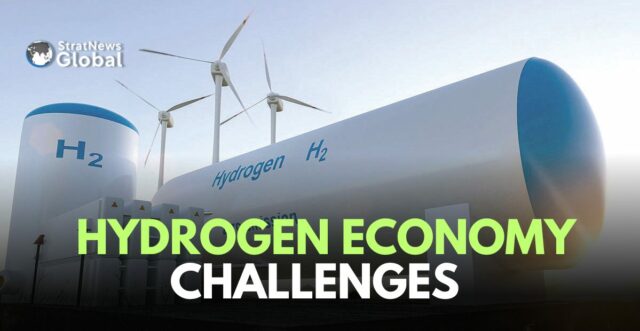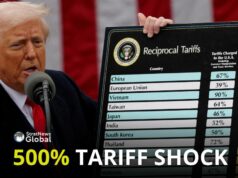Less than a week ago, India committed $25 million to develop hydrogen hubs as part of its green shipping initiative. Union Minister Pralhad Joshi, at an event in Hamburg, said the hubs will include bunkering and refuelling facilities for green hydrogen-powered vessels.
More recently, the Adani Total Gas began blending 2.2% green hydrogen with cooking gas and supplying to households in Ahmedabad. The green hydrogen is produced using wind and solar, both renewable energy sources.
State-owned Oil India Ltd has awarded a contract to H2e Power Systems to set up a 1MW green hydrogen project in Himachal Pradesh.
All these ventures suggest that the government’s ambitious plan to make India a global hub for green hydrogen, unveiled only last month, is getting off the ground. It is estimated that the green energy market could draw $100 billion in investments and generate over 6 lakh jobs in the coming years!
But there are question marks, chiefly over its viability.
What Is Green Hydrogen?
Hydrogen is essentially an energy carrier and the colour associated with it indicates how the production process took place. To produce hydrogen, an energy source is required, which after electrolysis will give hydrogen and oxygen. Most commonly used source for hydrogen production is natural gas, however, when natural gas is converted into hydrogen, it leaves a carbon trail behind as residue.
When this same hydrogen is produced from a renewable source of energy, such as solar or hydro power, the hydrogen produced emits no greenhouse gases, making it a viable alternative to conventionally produced hydrogen such as grey hydrogen.
Since the Indian economy is largely driven by fossil fuels, the solution lies in making the switch to green hydrogen and reach the climate goal deadline of 2070. But this transition is complex, says Utkarsh Patel, Associate Fellow at Centre for Social and Economic Progress (CSEP).
“Generating green hydrogen for use is not that difficult but to store and transport it, we need dedicated pipelines or tube trailers for it which doesn’t seem very viable. It also hasn’t been experimented at scale as much yet.”
How Can Green Hydrogen Be Used?
“Green hydrogen has applications in several industries – aviation, steelmaking, fertilisers too. Aeroplane propellers can be made to run on hydrogen, pilot runs for which are already underway. Ammonia can be generated through green hydrogen which can be used to run ships too, besides making fertilisers. The usage of hydrogen can be varied,” Patel said.
But no process for actually using green hydrogen in these sectors has been fully implemented at commercial scale because there are certain engineering challenges involved while creating such plants.
Patel says that “The current processes, which use fossil fuels to generate hydrogen and ammonia, are also very standardised and integrated. Replacing them can be a challenge, especially when we are in the initial stage.”
Challenges During Transition
Green hydrogen is not only about putting up the infrastructure and other associated costs. Will it be feasible once all this comes up is the question.
“Producing green ammonia currently costs twice as much as using fossil fuels, but urea, made from any ammonia, is sold at a subsided rate. It’s hard to charge more for urea just because it’s made from green ammonia. There is a high cost difference which needs to be cut down,” Patel says.
So while green hydrogen is a viable option for the future, its feasibility seems questionable in the present. However, if India is looking to reach its climate target goals, any cost incurred today may pay off in the future.
Studies have shown that its production costs are expected to come down by 50% by 2030, and continue decreasing albeit at a slower rate, until 2050. But production costs in regions with less renewable sources of energy maybe higher.
Prices of electrolyzers, that split water into hydrogen and oxygen, must come down for it to become viable. The lack of “mature supply chains” for electrolyzers and fuel cell technologies may slow down cost reduction process.
Global standards and certifications for no carbon trail hydrogen could facilitate international trade of sustainable products, while sharing of technologies and best practices could bring down costs. The future is out there, but if it is to be realised, today’s challenges need to be addressed with political will driving technological change.





